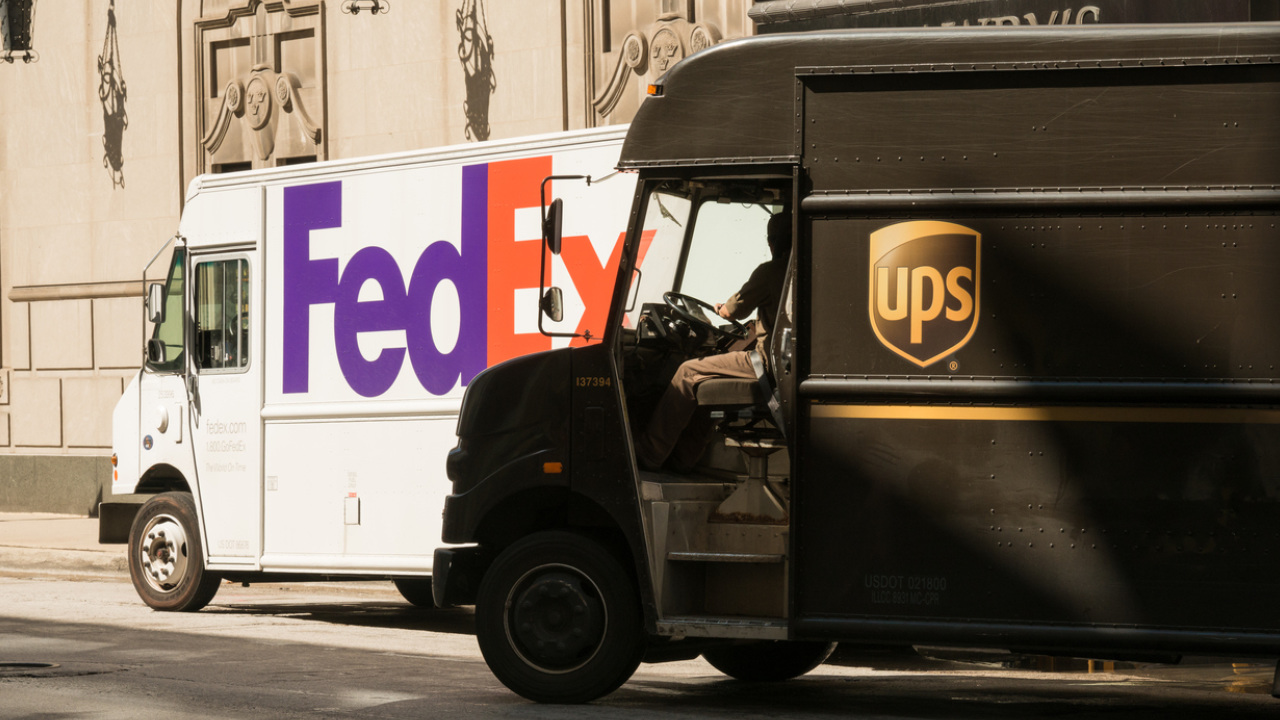Last Mile Delivery
Chances are before you run errands, you’ve probably already determined the route you’re going to take in order to hit all your stops. It may range in order of priority, relative proximity to your house, or simply preference. But it typically revolves around efficiency.
As it turns out, this conscious route calculation in your head happen to be one of the most well studied problems in computer science, famously known as the Travelling Salesman Problem. It seeks to find the shortest route between a number of destinations on a given map and returning home.
Now, it may not be hard to figure out if you have three or four destinations to hit in a given day. But if you’re a UPS, Fed Ex, or Amazon truck driver averaging around 125 stops a day, this problem becomes critically important and impossible to solve optimally.
That’s because as the number of destinations increases, the number of new possible routes jumps exponentially. For context, with just 10 destinations, there are about 300,000 possible route combinations. Jump to 15, and you get more than 87 billion permutations.
A Wired article touched on the complexity, “At UPS, the average driver makes about 120 deliveries per day, says Jack Levis, the shipping giant’s director of process management. To figure out how many different possible routes that driver could travel, just start multiplying: 120 * 119 * 118 * . . . * 3 * 2 * 1. The end result, Levis likes to say, far exceeds the age of the Earth in nanoseconds.”
Note that even for the world’s fastest supercomputers, it would take thousands of years to sift through each possible route to find the optimal one. Therefore, these companies rely on sophisticated algorithms to render delivery routes that are good, but not optimal. In fact, they have teams of Ph.D. mathematicians and data scientists working every day to tweak their algorithms in order to squeeze a fraction of a percent improvement. Although this herculean work often provides improved routes, they cannot provide a fully optimal solution.
Thus, there is a great opportunity for a novel innovation like MemComputing, which is specifically designed to overcome today’s technical limitations, to provide optimal or nearly optimal solutions for last mile delivery logistics.
Before we dive into the advantage of MemComputing when solving last mile delivery problems, let’s first see how companies are tackling this problem today.
UPS
After a decade of research and hundreds of millions of dollars spent in R&D, UPS developed its On-Road Integrated Optimization and Navigation (ORION) solution that tries to calculate the most efficient daily routes for its drivers. The ultimate goal of this software is to reduce the number of miles travelled, fuel consumed and carbon emitted by its fleet of trucks.
This tool deploys advanced algorithms and AI to find routes that are faster and more economically viable than previous techniques. UPS claims that ORION has saved its drivers an average of 6-8 miles per day on their routes, a significant achievement considering that saving just one mile per day per driver saves the company an estimated $50 million a year. With well over 100,000 delivery trucks operating in the US alone, and 220 million global deliveries made each day, ORION has saved UPS hundreds of millions of dollars annually while also dramatically reducing its emissions.
However, the usability of ORION has frustrated its drivers due to a myriad of difficulties stemming from its sub-optimal, approximate routing. The early implementation of ORION would overbook drivers, turn them around unintuitively, and even instruct them to make illegal or unsafe turns on highways. Experienced drivers often disregarded ORION’s calculated route and used their own knowledge of the streets to outperform it.
Even now, as upgrades to ORION are deployed such as its ‘Dynamic Optimization’ feature, UPS centers struggle to deploy it successfully. According to Straightaway, “Drivers across the nation reported a return to the “Stone Age,” pulling out maps and trying to navigate their manifests with no help at all. The irony of the situation? Drivers actually enjoyed the day, because it meant a day without using the ORION software.”
But what about Amazon?
Even Amazon admits that finding a truly optimal route is intractable, forcing them to rely on approximate routes. Although Amazon’s Last Mile Delivery team calculates routes for its drivers on a daily basis, many drivers also deviate from the computed routes too. This is because existing optimization models don’t include factors such as real-time traffic updates, parking availability, and other knowledge that experienced drivers obtain.
Beryl Tomay, Amazon’s vice president for Last Mile Delivery said, “Despite the tremendous advances in routing optimization over the last decade, there remains an important gap between periodic route planning and real-time route execution.”
To combat these issues, Amazon recently held a competition that challenged academic teams to train machine learning models to predict the delivery routes chosen by experienced drivers.
Indeed, as the volume of packages continues to surge and customers’ expectations rise, parcel companies are actively seeking new, alternative optimization solutions to improve their delivery services.
Enter MemComputing
MemComputing offers a revolutionary approach to solving complex optimization problems in transportation logistics. Due to our novel computational design, last mile delivery problems such as those faced by UPS, Fed Ex, Amazon, and others can now be solved optimally at scale at unprecedented speed.
Where existing optimization algorithms and heuristics cannot incorporate real-time information and only provide approximate solutions, MemComputing’s solution delivers optimal solutions at scale, driving new levels of efficiencies for its customers.
One of the many benefits is that our MEMCPU Platform can ingest traffic, weather and other live data to rapidly respond to disruptions in near real-time. Even further, drivers may run into construction or other unexpected road closures, detours, etc. A driver can input these changes and have the remaining pickups and deliveries quickly rescheduled based on their current location.
The resulting solution opens the door to greater operational efficiencies and flexibility across the delivery fleet, translating to significant cost savings, reduced carbon emissions, and improved driver satisfaction.
Wrapping up
The rapid rise of ecommerce has resulted in a higher demand for faster deliveries, putting pressure on package delivery companies to improve their last mile logistics. With legacy software, companies struggle to deliver the best approximated route options for their drivers, leading to operational inefficiencies, frustrated drivers, and dissatisfied customers.
While we focus on last-mile package delivery in this blog, this problem extends to interstate, intrastate and worldwide deliveries of larger cargo regardless of whether it is being delivered by truck, rail, air or sea.
MemComputing offers a novel solution to parcel delivery and other transportation logistics companies interested in dramatically improving their supply chains and last mile delivery services.
MemComputing’s team is ready to advance your competitive edge with a tailored optimization solution. Explore a free account today or contact us directly at [email protected] to get started.


